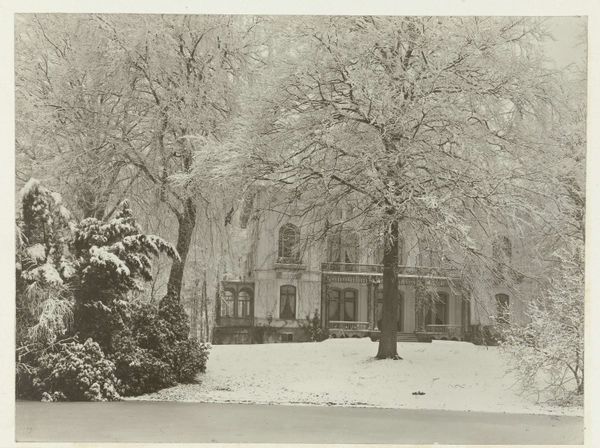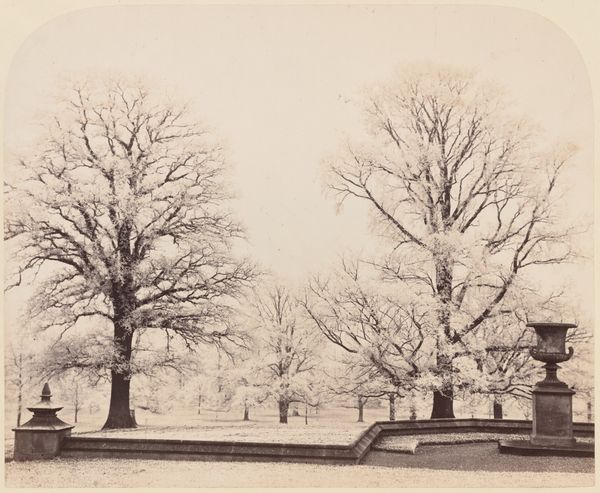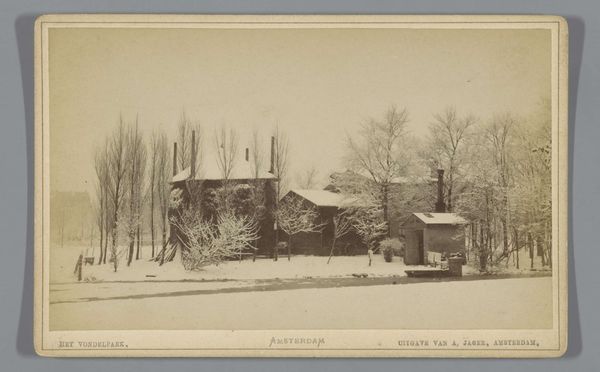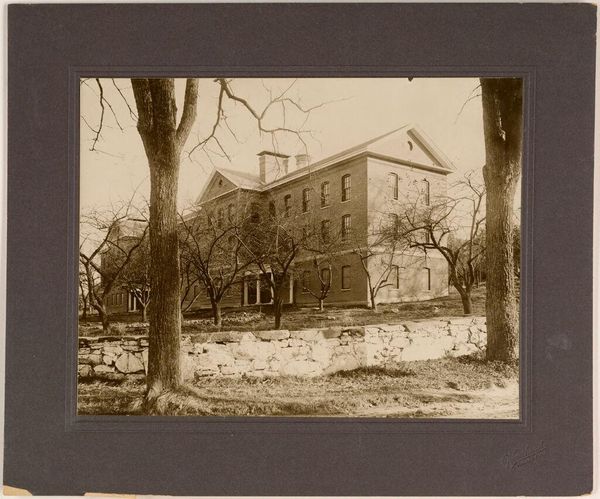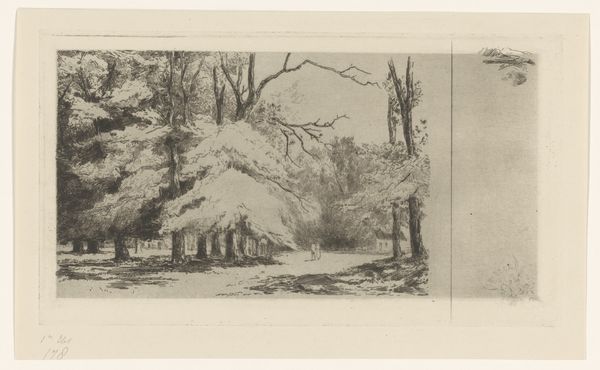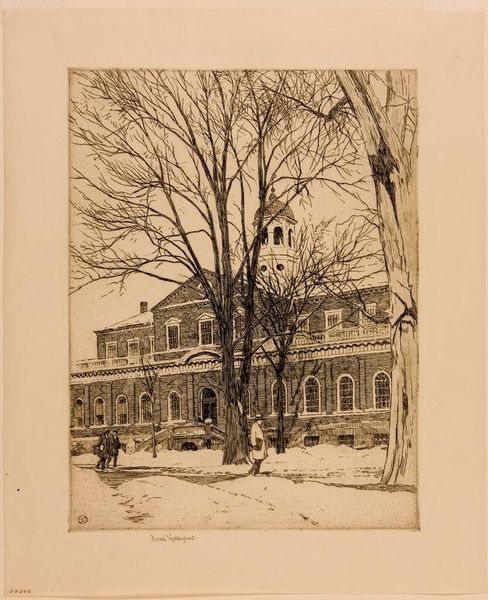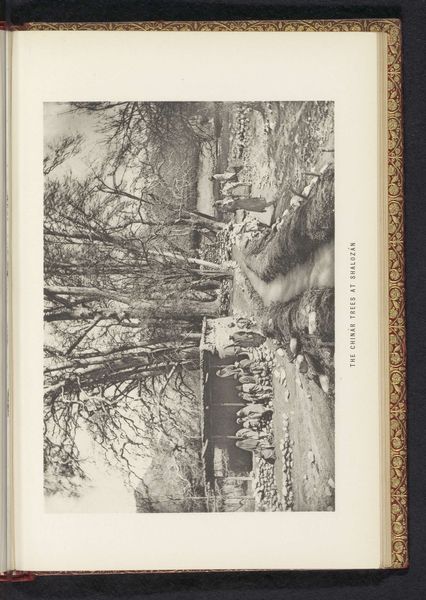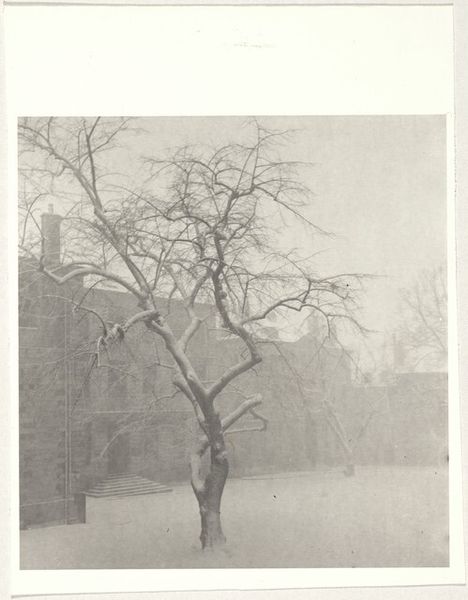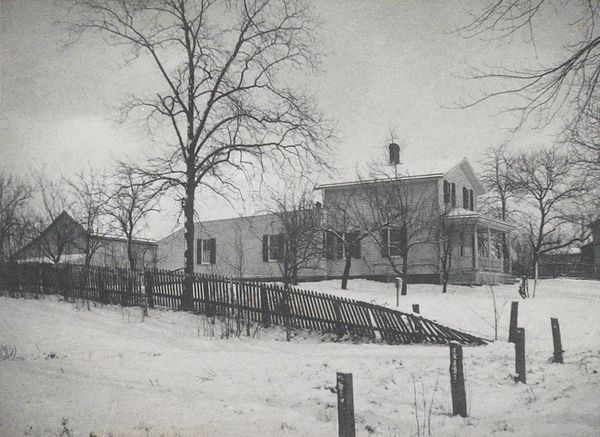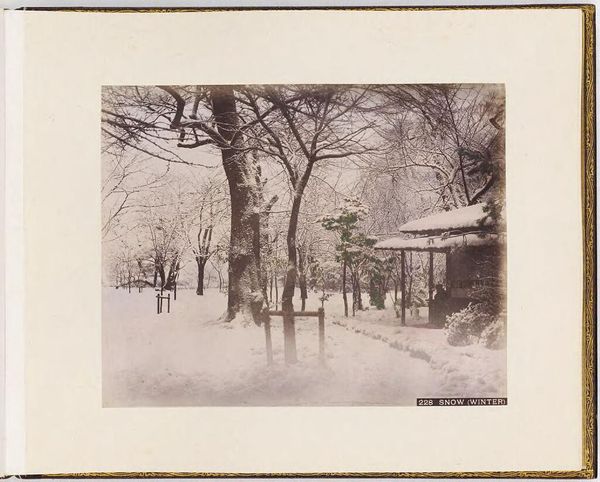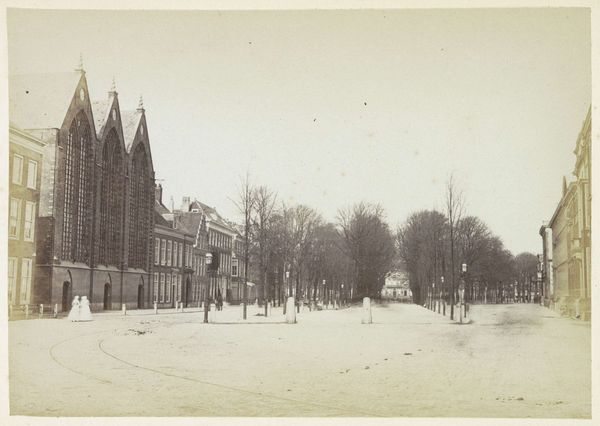
Dimensions: height 84 mm, width 171 mm
Copyright: Rijks Museum: Open Domain
Editor: This is "View of an Orangery in Winter in North America," a gelatin-silver print made sometime between 1864 and 1873 by Ferrier Père-Fils et Soulier. It has such a still and quiet feeling. What do you see in this piece? Curator: This photograph is a fascinating look at the romanticism movement as it moved into the Americas. The grand architecture juxtaposed against this unforgiving winter landscape speaks volumes about humanity’s desire to not only control nature but to exist outside of it. Do you notice the implied class divides evident in this curated "natural" setting? Editor: You mean with the architecture acting as a stark contrast to nature? Curator: Precisely. The architectural elements within the meticulously crafted landscape underscore the power dynamics at play. Whose labor cultivated the grounds of the Orangerie, who lived in it? It’s also critical to examine the absence. The complete lack of human presence creates a stark scene of both serenity and isolation, raising vital questions about access and exclusion during this era. What does the ice represent to you? Editor: Hmm, a kind of barrier perhaps? Curator: That is a perceptive response! One might interpret the winter's grip as a symbolic representation of nature's ability to disrupt carefully structured systems. The photograph captures a moment of both privilege and vulnerability, where the harsh realities of nature expose the instability and biases of established power structures. Considering the era and medium, what statement could a photograph like this make? Editor: It makes me think about the environment and how we engage with the seasons. I never considered photography in that light. Curator: Right! By examining its historical backdrop and dissecting its visual elements, the artwork encourages us to contemplate the intricate links between social structure and cultural views and the natural environment, pushing us to reconsider the colonial gaze prevalent throughout art history.
Comments
No comments
Be the first to comment and join the conversation on the ultimate creative platform.
